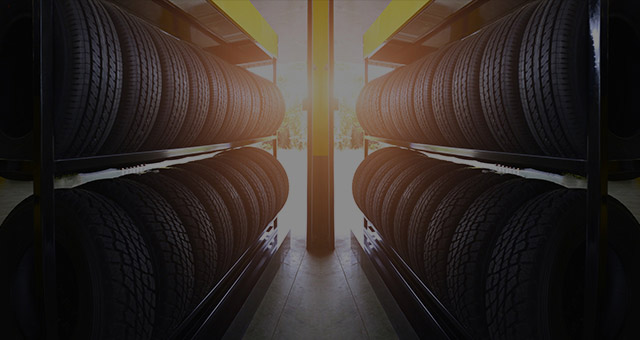Discover Top-Quality Tires Morris IL: Select the most effective for Your Vehicle
Discover Top-Quality Tires Morris IL: Select the most effective for Your Vehicle
Blog Article
Tire Service: Comprehending Tire Pressure Tracking Equipments
Understanding Tire Stress Tracking Systems (TPMS) is a vital facet of keeping ideal vehicle efficiency and safety and security when traveling. With improvements in automobile technology, TPMS has actually come to be a common function in modern vehicles, providing real-time details on tire stress degrees. Diving deeper right into the details of TPMS, one can discover the different parts that make up this system and the significance of each in making sure exact surveillance. From direct to indirect TPMS systems, the landscape of tire pressure tracking is varied, each with its one-of-a-kind set of benefits and considerations. Stay tuned to unravel the complexities of TPMS, from upkeep suggestions to the undeniable benefits of maintaining your tires appropriately inflated. mopar tire service specials.

Significance of TPMS
The significance of Tire Pressure Monitoring Systems (TPMS) depends on their ability to enhance vehicle safety and security and efficiency through real-time tracking of tire pressure degrees. Keeping the correct tire pressure is vital for ensuring ideal handling, braking, and general safety of an automobile. TPMS gives chauffeurs with prompt feedback on any type of overinflated or underinflated tires, allowing for prompt adjustments to be made.
Parts of TPMS
Comprising various vital aspects, a Tire Stress Tracking System (TPMS) functions as a sophisticated safety feature in modern-day lorries. The major elements of a TPMS include sensing units, a control component, and a warning indicator. Sensors are normally located in the tire shutoff stem or connected to the wheel assembly, where they determine tire stress and transfer information to the control module. If it discovers significantly reduced pressure in any of the tires, the control component processes this details and sets off a warning. The warning indicator, typically a sign on the dashboard, alerts the motorist to check the affected tire or tires. Some progressed TPMS models additionally present the real tire stress readings for each and every tire, supplying vehicle drivers with real-time information to make sure optimum tire performance and safety and security. By keeping an eye on tire stress continually, TPMS helps avoid crashes, decreases tire wear, and enhances gas efficiency, making it a critical element for lorry safety and performance.
Kinds of TPMS

On the other hand, indirect TPMS relies upon the car's wheel rate sensors to check tire pressure. This system detects underinflation by contrasting the rotational speeds of the wheels. Indirect TPMS is less pricey than direct TPMS, as it uses important link existing sensors within the car.
While straight TPMS provides extra precise analyses, indirect TPMS is simpler in layout and normally requires much less upkeep. Both systems have their advantages and limitations, and the choice between them usually depends upon variables such as cost, automobile make, and personal preference. Recognizing the differences between these 2 sorts of TPMS can assist lorry owners make notified decisions relating to tire maintenance and safety.
TPMS Upkeep Tips
Effective upkeep of TPMS is important for ensuring optimum efficiency and safety of your lorry. On a regular basis checking the TPMS sensors for any type of damage or deterioration is important. Make certain that the sensing units are free and clean from particles that could conflict with their functioning. Furthermore, it is a good idea to examine the sensing unit batteries periodically and replace them as needed to ensure precise analyses. Conduct routine checks on the tire stress levels and contrast them with the TPMS analyses to guarantee they correspond. Recalibrate the system following the producer's guidelines if there are any type of inconsistencies. In addition, throughout tire rotation or replacement, ensure that the TPMS parts are handled very carefully to avoid any kind of prospective damage. Lastly, if the TPMS cautioning light illuminates on the dashboard, address the issue promptly by examining the tire stress and the general system for any kind of mistakes. By sticking to these maintenance pointers, you can extend the life-span of your TPMS and boost the security of your driving experience.
Benefits of Appropriate Tire Stress
Keeping appropriate tire stress, as highlighted in TPMS Upkeep Tips, is critical for enjoying the various advantages associated with ideal tire stress levels. One of the main advantages of keeping the correct tire pressure is enhanced gas efficiency. When tires are appropriately blown up, there is much less rolling resistance, resulting in much better gas economic click over here climate. In addition, correct tire pressure guarantees also tire wear, expanding the lifespan of the tires and advertising more secure driving problems. With the best tire stress, lorries also have better handling and grip, specifically in unfavorable weather. This can improve general driving efficiency and safety and security for the chauffeur and guests. Keeping optimum tire stress can add to a smoother and a lot more comfy adventure by reducing vibrations and noise triggered by underinflated tires. Finally, the advantages of correct tire stress exceed simply tire durability; they encompass improved gas performance, improved safety, better lorry efficiency, and general driving comfort.
Conclusion
Finally, comprehending tire pressure monitoring systems (TPMS) is vital for keeping optimum tire stress and making certain vehicle safety. By acknowledging the relevance of TPMS, knowing with its parts, knowing the various kinds available, adhering to appropriate maintenance pointers, and recognizing the advantages of preserving appropriate tire stress, motorists can enhance their driving experience and lengthen the lifespan of their tires. Appropriate tire stress is key to efficient and risk-free vehicle operation.

Report this page